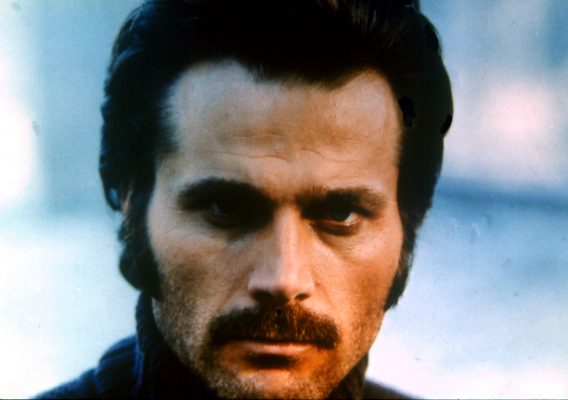Available on Blu-ray Mon 4 Feb 2019
Luigi Bazzoni isn’t a name that leaps from the pack of ‘classic’ giallo directors. He lacks the iconic status of Dario Argento, the lunatic gore of Lucio Fulci, or even the relentless prolificness of Sergio Martino. Among the crowded ranks of the sub-genre, Bazzoni’s The Fifth Cord is a rather muted affair. It could be a standard serial killer thriller, were it not for the familiar tropes of the black leather gloves so beloved of cinematic murderers of the period, J&B whiskey, and the expected quantity of naked flesh. What Bazzoni does have at his disposal is the steely charisma of Django‘s Franco Nero, and the jaw-dropping visual sense of cinematographer Vittorio Storaro (Apocalypse Now, The Last Emperor). Such assets make this yet another worthy giallo release from the Arrow Video stable.
The Fifth Cord, adapted from a novel by Scottish writer D.M. Devine, sees alcoholic journalist Andrea Bild (Nero) investigate a series of murders that revolve around a private party. All of the victims attended the sumptuous bash, as did he. This not only implicates him as a potential suspect, but also makes him a target of the killer. He must solve the case before he’s arrested or murdered himself, in between bouts of drinking and romancing a string of beautiful women (often at the same time).
Bazzoni’s film, while taking cues from the likes of The Bird With the Crystal Plumage, is noticeably more low-key than many of its contemporaries. The central mystery offers little in the way of intrigue; it’s relatively small cast allowing only a small pool of suspects, which is of course whittled down further as the film progresses. Unusually for a giallo, Bazzoni seems slightly averse to revelling in the depiction of the murders. In a few cases we only see the aftermath. In others, a brief flash of violence before the killer beats a retreat. There are however, several excellent scenes of real tension. One involves a disabled woman stalked by the murderer as she tries frantically to crawl away. Another sees a terrified young boy chased down a seemingly endless corridor. These scenes alone make the film a worthy watch, and are augmented by a dextrous score from Ennio Morricone, and Storaro’s inspired use of light and shadow.
Storaro is the real trump card here. Even among its more celebrated contemporaries, The Fifth Cord looks stunning. Storaro shoots everything to suggest a sense of voyeuristic interest and menace, which gives it a similar paranoid edge as Coppola‘s The Conversation. It is the sheer beauty of the film that drags the film out of the ordinary. On a local note, among the extras is a video essay on the film’s use of location, architecture and space by Edinburgh critic and giallo aficionado Rachael Nisbet which will greatly increase your appreciation of Bazzoni and Storaro’s visual achievements.
